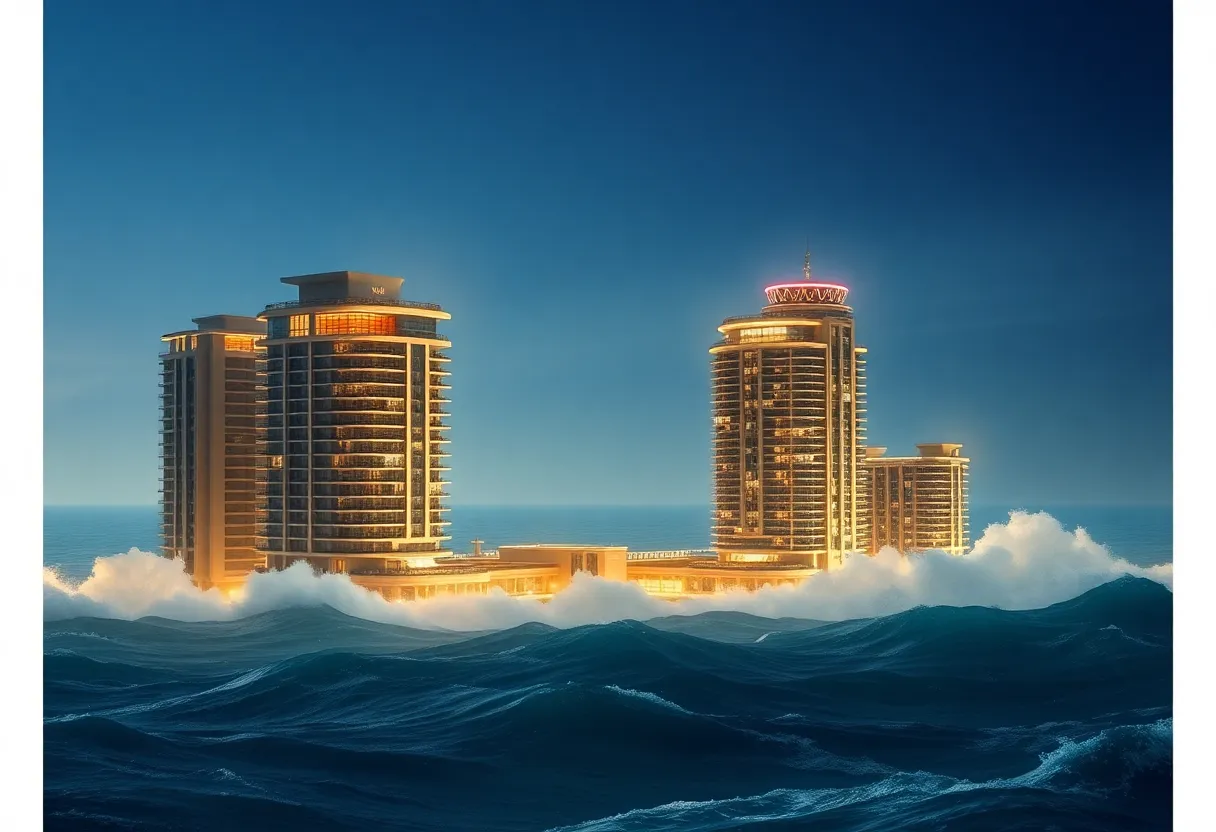

Luxury skyscrapers partially submerged in rising ocean waves.
Want to target the right audience? Sponsor our site and choose your specific industry to connect with a relevant audience.
Prominent brand mentions across targeted, industry-focused articles
High-visibility placements that speak directly to an engaged local audience
Guaranteed coverage that maximizes exposure and reinforces your brand presence
Interested in seeing what sponsored content looks like on our platform?
May’s Roofing & Contracting
Forwal Construction
NSC Clips
Real Internet Sales
Suited
Florida4Golf
Click the button below to sponsor our articles:
Sponsor Our ArticlesMiami, FL—A recent study conducted by scientists at the University of Miami has revealed a surprising trend: dozens of luxury condos, hotels, and other buildings in southeast Florida are sinking at an alarming rate. Researchers found that between 2016 and 2023, 35 buildings from Golden Beach to Miami Beach sank as much as three inches, raising concerns among residents and tourists who frequent these properties.
The affected buildings include well-known structures such as the Ritz-Carlton Residences, Trump Tower III, Trump International Beach Resorts, and the iconic Surf Club Towers. These buildings house tens of thousands of people, and their gradual sinking poses risks to safety and stability.
The primary cause driving this subsidence is vibrations resulting from ongoing construction work. These vibrations can compact soil particles, leading to a phenomenon known as subsidence—the gradual sinking of land. According to Falk Amelung, the senior author of the study and a professor of geophysics at the University of Miami’s Rosenstiel School, the effect can be compared to shaking ground coffee to create more room in a cup.
While it is common for buildings to shift during or immediately after construction due to the weight of heavy materials, the finding that subsidence continues for years after construction is what surprised researchers. This trend became a focal point for the study, especially after the tragic collapse of the Champlain Towers in Surfside in 2021.
The research team employed satellite imaging technology to track minute movements of the Earth’s surface. They specifically monitored various points of the buildings, including balconies and rooftop air conditioning units, to observe how these structures moved over time. Their analysis showed that nearly 70% of buildings in northern and central Sunny Isles Beach are currently sinking, with around 23% of these structures constructed in the past decade.
Other contributing factors to the sinking phenomenon include the daily tidal shifts that move water toward and away from the shore and seismic activity. The weight of sediment accumulated over time can also result in soil compaction, further complicating the stability of these coastal buildings. Areas where new land has been created through sediment backfilling are particularly vulnerable to subsidence.
Miami faces a dual threat from land subsidence and rising sea levels, which exacerbate the risk of coastal flooding, storm surges, and erosion. The findings raise valid concerns about the city’s vulnerability, as even small changes in elevation—whether due to sinking land or rising sea levels—can lead to significant flooding.
According to climate researcher Brian McNoldy, sea levels in the study area have risen by approximately 2.6 inches per decade over the last 30 years. Current trends indicate that buildings are sinking at a rate comparable to the rise in sea levels, effectively doubling the rate of perceived sea-level rise at these locations.
Despite these serious issues, experts maintain that there is no immediate cause for panic. Both Shirzaei and Amelung emphasize the promising potential of using satellite monitoring technology to proactively assess the structural stability of coastal high-rises. This innovative approach can guide local actions to mitigate risks associated with subsidence.
“The good thing about land subsidence, in contrast to sea level rise, is that we can take local actions to protect ourselves against it,” said Shirzaei. By utilizing the data collected through this research, proactive measures can be taken to safeguard these vital structures, thus preventing potential catastrophic events in the future.
As Miami confronts these significant challenges, continued research and monitoring will be essential for ensuring the safety and stability of its urban landscape.
News Summary Christina Pappas has been appointed as the new president of Illustrated Properties, a…
News Summary MSC Cruises is making significant strides in the U.S. market by relocating its…
News Summary The Florida State Capitol recently came to life during Children's Week, a week-long…
News Summary The 25th anniversary of the Chain of Parks Art Festival in Tallahassee united…
News Summary Today, many popular websites faced disruptions due to widespread HTTP 503 errors, caused…
News Summary A small plane crashed in Tennessee, resulting in the loss of three lives.…